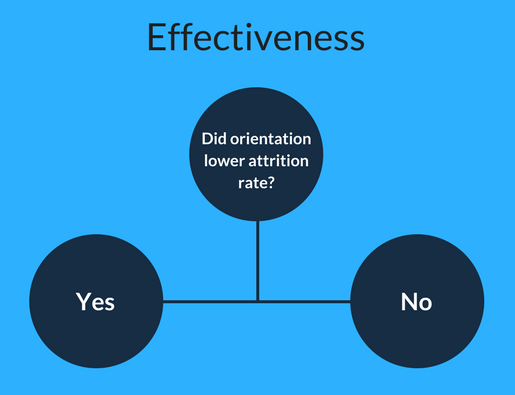Checking Your School's Vitals with KPIs
By: Annie on Oct 19, 2017 6:30:00 AMChecking Your School's Vitals with KPIs
By: Annie on Oct 19, 2017 6:30:00 AM
KPIs (or Key Performance Indicators) can be an extremely valuable tool for Student Affairs professionals. Simply put, it is impossible to measure every single data-point of a business, so KPIs enable us to check the 'vitals'.
Speaking the Language: Leading and Lagging Indicators
For the purposes of this discussion, we will be organizing our examples around student retention and orientation.
When discussing KPIs, we often hear about "lagging" and "leading" indicators. Lagging indicators are easily measured, outcome-based data, while leading indicators are predictive, based on tasks and other inputs. Lagging indicators happen after the fact, whereas leading indicators lead up to it, as their respective names suggest. To better understand these terms, let's explore a quick scenario an institution might encounter.
Let's say we want to measure a KPI associated to student attrition, a lagging indicator would look at how many first year students dropped out at the end of a semester. Assuming orientation as a predictive measure of retention, a leading indicator for this example might be: How many students participated in orientation (assuming they are more likely to retain).
While our lagging Indicator is measured after the fact (we simply look at how many students retained), our leading indicator is predictive, and therefore enables us to act on it during the year. The number of students that miss orientation would be a leading indicator of how many students will retain over the next semester.
Is it Worth it? Measuring Effectiveness and Efficiency
Two other terms that come up when discussing KPIs are "effectiveness" and "efficiency." Like lagging indicators, effectiveness is measured after the fact, and is very easily determined. To find out if our indicator was effective, we must simply ask ourselves: "did [blank] work? Yes or no?" If the answer is “yes,” then it was effective, but if the answer is “no,” then it was not.
Going back to our retention/orientation scenario, we could measure how effective a positive orientation was by asking: Did students who attended orientation show a lower attrition rate than those who did not? Yes or no?

If our answer is “Yes” then we may continue; however, if the answer is “No” then we must restart the process with a new lagging indicator.
Easy. However, our job is not yet done. Now we must measure efficiency, a task that requires a little more brain power. Instead of answering a simple “yes/no” question, we must determine (and list) the resources needed to measure our leading indicator.
Going back to our retention/orientation example, to measure efficiency we must list the relevant resources needed to conduct and track orientation attendance, which may end up looking something like this:
- Someone needs to send out emails to all first year students, notifying them of orientation (i.e. promotion)
- Someone needs to take attendance at orientation
- Someone needs to periodically cross check this list with the names of first year students who drop out
- Someone needs to analyze this data and determine if orientation had an impact
Now that we have this information we can analyze the data and determine whether or not our goal was worth pursuing at all. For example, if students who attended orientation showed the same attrition rates as those who did not, or if the cost to run a successful orientation is greater than or equal to the cost of attrition, then we would try a different leading Indicator.
Thinking Outside the Box
KPIs have the ability to greatly assist Student Affairs professionals by giving them insight into problem areas, and identifying successes and improvements. Although, when measuring efficiency, if we see that our list of resources is too exhaustive we might look into a solution to shorten this list and assist the process.
Institutions have already started thinking about incorporating technology as part of their data-capture for KPI measurement. Electronic check-in to orientation events would measure trends automatically, bringing our resource list down to two:
- Promotion of Orientation
- Electronic check-in system
While it is great to have a goal, we must have a method of measuring whether or not the path we've taken to achieve this goal is practical in the short term as well as the long term. By understanding KPIs, and using them accordingly, Student Affairs Professionals have the ability to make life easier not only for themselves, but for their students as well.
Can you think of any other scenarios where measuring KPIs would be beneficial for Student Affairs Professionals? Comment with the Hashtag #SAProKPI.

.png)
.png)
.png)

